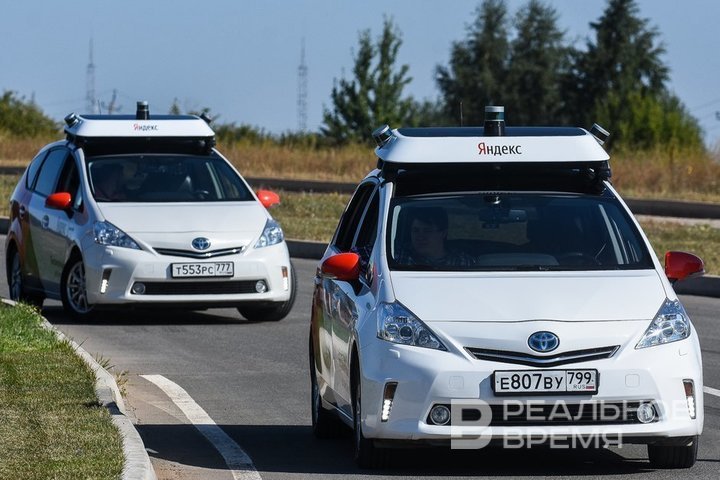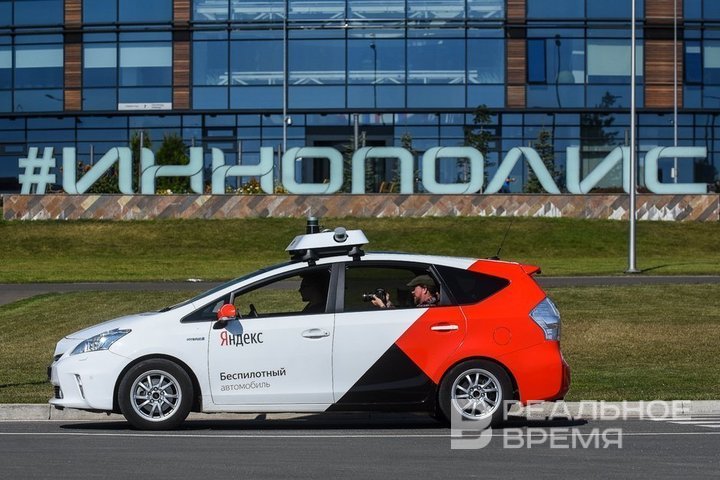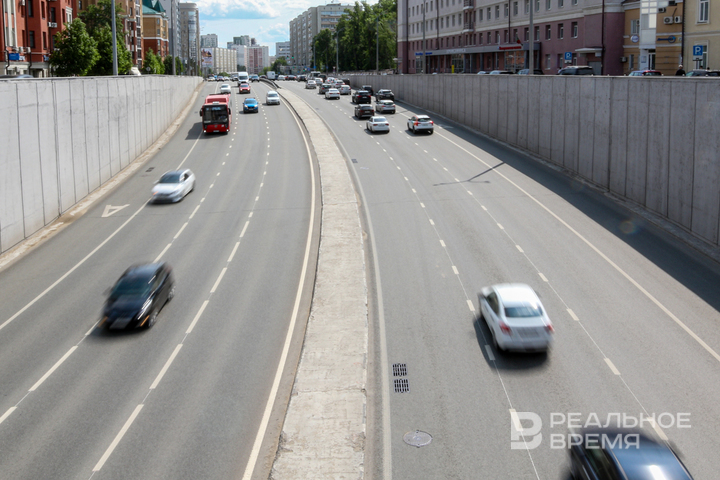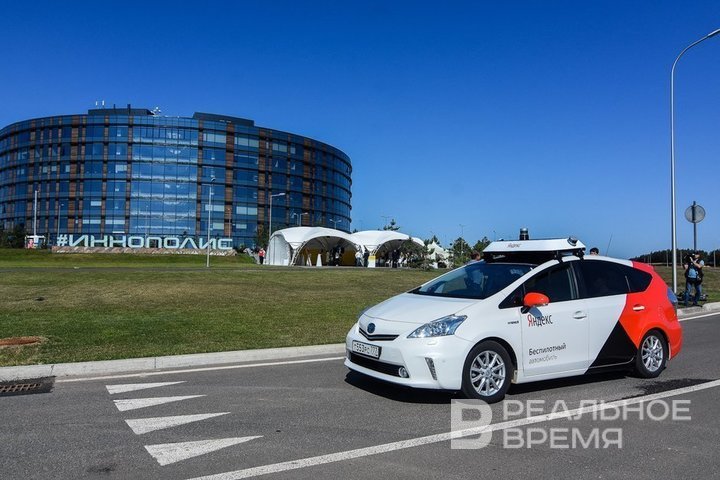Six years to wait for the promise: Kazan roads ready for unmanned taxi?
Experts will have to develop a legal framework and find an answer to the question of whether to hit a pedestrian violator or fly off into a ditch by 2030

Russia is once again talking about introducing unmanned taxis — the Ministry of Transport announced that driverless cars will begin carrying passengers after 2030. However, there are many problems that prevent this — the lack of infrastructure readiness and the writing of new laws are some of them. For example, in a situation where it is necessary to choose between colliding with an obstacle or hitting a pedestrian, the car will prefer to protect the people inside, experts are sure. Read more about it in the report of Realnoe Vremya.
Tatarstan has been trying to bring driverless cars to the roads for six years
Passenger driverless cars will appear on the streets of the country's cities after 2030. The Russian Ministry of Transport intends to gradually introduce such vehicles, guaranteeing maximum safety for passengers and pedestrians. This was stated by Deputy Minister of Transport of the Russian Federation Andrei Nikitin at the Saint Petersburg International Economic Forum. According to him, small robotic goods delivery vehicles — rovers — are already operating on city roads. As the speaker noted, the department's priority is to ensure a high level of reliability of autonomous vehicle control technologies.
In turn, Tatarstan has been a pilot region for testing unmanned vehicles (UPVs) since 2018. In particular, the first unmanned taxis appeared in Innopolis. For the past seven years, the corporation has been fine-tuning the processes together with the city. In 2019, the head of the press service of the Tatarstan raisa, Liliya Galimova, said that Kazan refused to put unmanned vehicles on the roads due to the lack of the necessary infrastructure and the large number of cars on the roads.

In the same 2018, deputies of the State Council of Tatarstan announced plans to create a bill. It was planned that the deputies would consider it in 2019. However, the first “specifics” appeared two years later — in 2020. Then members of the Committee on Economy, Investments and Entrepreneurship of the State Council of the Republic of Tatarstan developed a resolution on the development of innovative technologies in transport and the creation of conditions for the development of the market segment of innovative vehicles.” The authors of the document noted that for the full development of unmanned vehicles, it is necessary to modernize the transport infrastructure — asphalt, markings, signs. Measures of state support for the industry should also be provided.
Member of Parliament and head of the project for the development of the document Marat Galeyev then noted that the presented project is a framework, but necessary for further work in this direction. According to Galeyev, the regulatory framework should have been fully prepared three years ago — by 2022.
“The main problem, as in other countries, is determining the culprit in the event of an accident with a drone. In addition, for drones to go, the appropriate infrastructure is needed — roads equipped with the appropriate sensors. The process is moving, but not as fast as we would like,” Galeyev said in a conversation with a journalist.
Lidars and other sensors may not save from unpredictable consequences
Deputy Head of the Kazan Automated Traffic Management System Yevgeny Pyrov commented on the prospects for introducing unmanned transport in the city, noting a number of significant obstacles to the implementation of this technology.
“Today, specialists do not have a clear understanding of how unmanned vehicles will be able to function in real urban traffic conditions,” Pyrov notes.

According to him, existing technologies, including lidars, may not be effective enough in conditions of heavy traffic and unpredictable behaviour of other road users. The speaker paid special attention to the legal aspect of the introduction of unmanned transport.
“In the event of an accident involving a driverless car, many questions arise regarding liability. This is especially relevant for complex intersections with a large flow of pedestrians and cyclists,” said Pyrov.
As for the pilot project in Innopolis, according to the expert, the conditions of this city cannot be considered representative for full-fledged testing of the technology. According to Pyrov, there is practically no car traffic in Innopolis, and all objects are within walking distance, which does not reflect the real picture of urban conditions.
Three people can be at fault in an accident: the owner, the manufacturer, or the programmer
Vladlen Kopvillem, a lawyer at the Federation of Car Owners of Russia, is confident that the key issue remains the issue of liability in the event of an accident involving driverless cars.

Kopvillem pays special attention to the ethical side of the issue. According to him, the system is programmed to save the lives of passengers, which can lead to decisions being made to the detriment of other road users, the lawyer explains. He also points out the difficulties of interaction between unmanned transport and law enforcement agencies and the registration of violations. For example, in a situation of choosing between a collision with an obstacle or hitting a pedestrian, the car will prefer to protect the people inside.

In addition, as the expert notes, traffic police inspectors cannot check the documents of an unmanned car, and in the event of a violation of the rules, there is a difficulty in registering the incident. At the same time, he emphasizes that all unmanned cars are equipped with cameras that can record violations by other road users, which can be called a plus.
Kopvillem also expresses doubts about the possibility of mass introduction of unmanned transport in large cities in the coming years.
“The experience of Innopolis, where there is practically no traffic, cannot be extrapolated to a city with a population of over a million,” the lawyer concludes, noting that even in test zones, driverless cars are mainly used to deliver goods, and not for full-fledged movement around the city.
Non-working Internet and lack of infrastructure can ruin all plans
Similar questions are asked by the founder of the transport and construction company Capital, economist Ramil Khakimzyanov.

Khakimzyanov draws special attention to insurance issues, noting that insurance companies can set prohibitive rates due to the lack of trust in driverless cars and the unpredictability of the situation. At the same time, the economist believes that artificial intelligence may be more reliable than the human factor, since it eliminates risks such as driver fatigue or distraction by the phone.
Among the technical difficulties, the expert highlights the problem of unadapted arrivals and the lack of up-to-date maps. Internet connection failures and an insufficient number of satellites for navigation may become a significant obstacle. Timely updating of information about road repairs is extremely important, since the drone may not see the repair work and collide with road services.
“If we are talking about electric taxis, it is necessary to provide a sufficient number of charging stations and consider the issue of preferential electricity tariffs for taxi fleets. Despite the rising cost of electricity, this option should remain more profitable than refueling,” the economist notes.